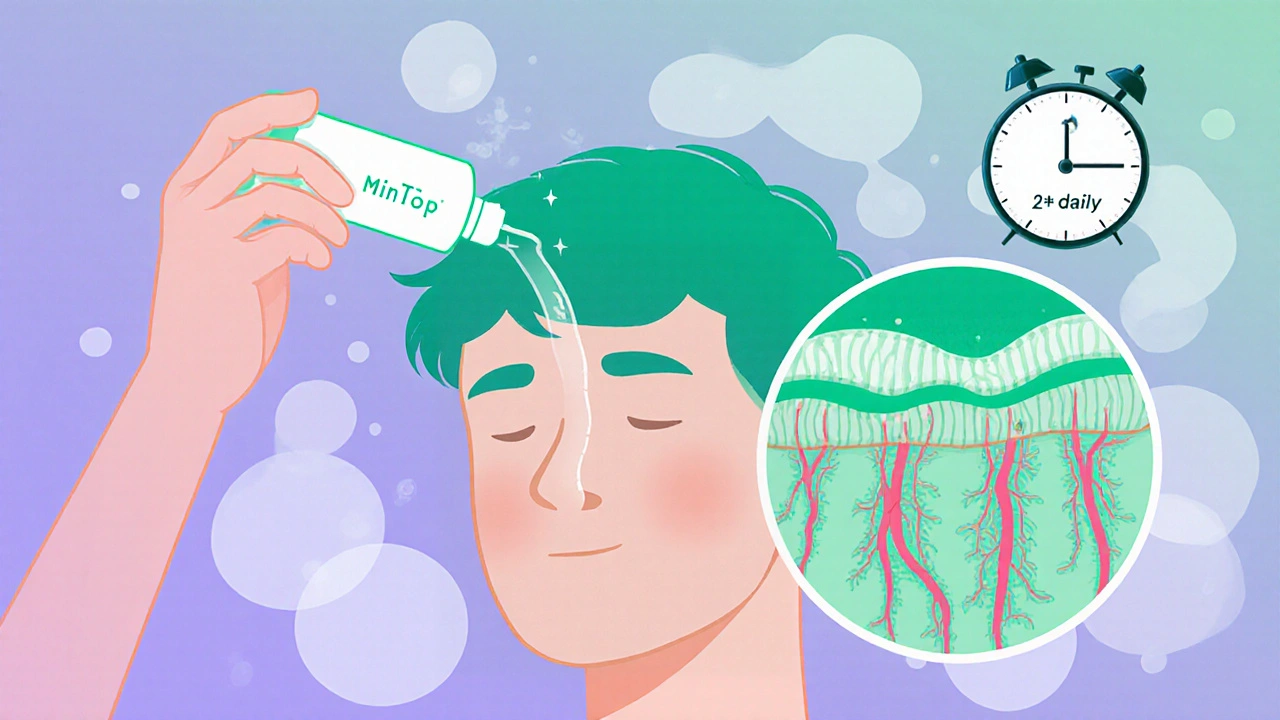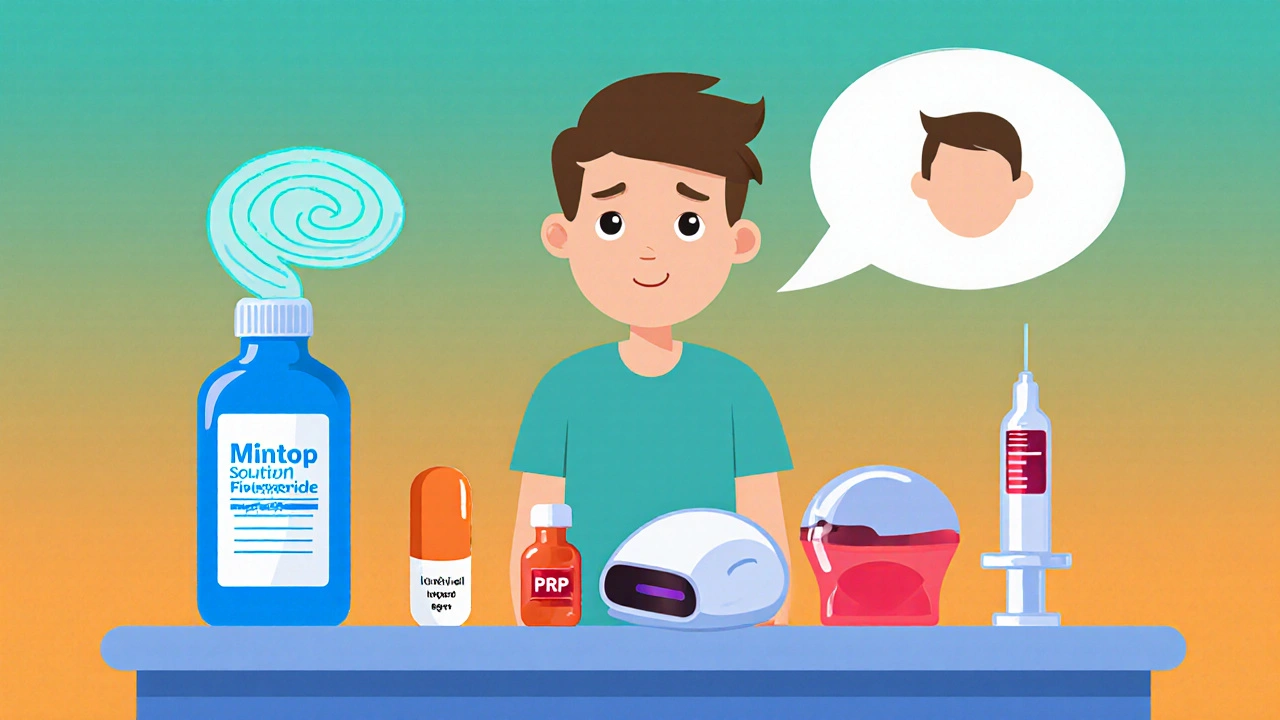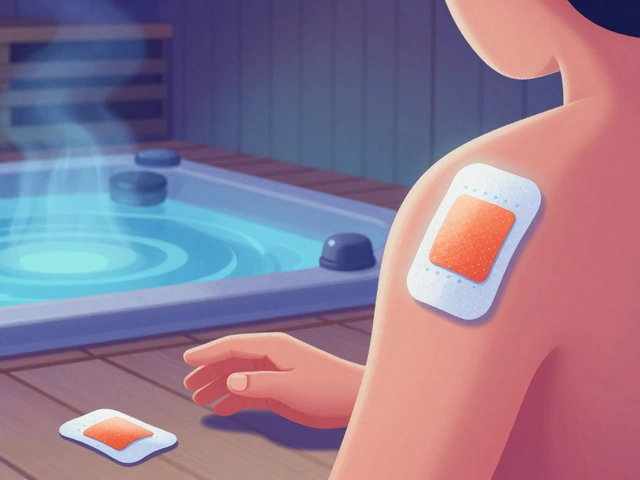Hair Loss Treatment Selector
Find Your Ideal Hair Loss Treatment
Answer a few quick questions to get personalized recommendations based on your priorities and needs.
What matters most to you?
Prioritize treatments that deliver the strongest results
Find affordable options that fit your budget
Choose treatments with minimal health risks
Prefer easy-to-use, non-invasive options
Recommended Treatment
Why this treatment?
Based on your selected priorities and comparison criteria from the article.
Quick Takeaways
- Mintop Solution delivers 5 % minoxidil directly to the scalp and works best for early‑stage thinning.
- Finasteride blocks DHT systemically and shows the highest hair‑count increase but carries hormonal side‑effects.
- Low‑Level Laser Therapy (LLLT) is drug‑free, painless, and ideal for people who dislike topical applications.
- Platelet‑Rich Plasma (PRP) offers natural growth‑factor stimulation but requires clinic visits and higher upfront costs.
- Hair transplant provides permanent density but is surgical, costly, and not suitable for diffuse loss.
When you’re trying to decide which product or procedure can actually keep your hair from falling out, the market can feel overwhelming. Below we break down the science, cost, and real‑world results of Mintop Solution and the most common alternatives, so you can match a treatment to your lifestyle and budget.
What is Mintop Solution?
Mintop Solution is a 5 % minoxidil topical formulation marketed for male and female pattern baldness. The liquid is applied twice daily to the affected scalp area, and it contains a propylene glycol base that helps the active ingredient penetrate the skin. Mintop’s branding highlights a “cool mint” scent designed to reduce the tingling sensation that many users experience with generic minoxidil.
How Mintop Solution Works
Minoxidil, the key component of Mintop, was originally an oral antihypertensive. When used topically, it widens blood vessels around hair follicles, increasing oxygen and nutrient delivery. This vasodilation also prolongs the anagen (growth) phase of the hair cycle, leading to thicker shafts over time. Clinical trials report a 30‑45 % increase in hair count after six months of consistent use for 5 % formulations.
Criteria to Compare Hair‑Loss Treatments
To make a fair comparison we look at five pillars that matter to most users:
- Effectiveness: measurable increase in hair count or density.
- Safety profile: side‑effects, contraindications, and long‑term health impacts.
- Cost per year: direct expense plus any hidden fees (e.g., doctor visits).
- Convenience: frequency of application, need for equipment, or clinic visits.
- Evidence level: how many peer‑reviewed studies back the claims.
Each alternative is scored against these criteria in the table later on.

Finasteride (Oral DHT Blocker)
Finasteride is a prescription 1 mg tablet that inhibits the enzyme 5‑α‑reductase, reducing dihydrotestosterone (DHT) levels in the scalp. DHT is the primary hormone that shrinks hair follicles in androgenetic alopecia. In a 12‑month randomized trial, 70 % of men on finasteride experienced a ≥10 % increase in hair count, outperforming minoxidil alone. However, side‑effects can include sexual dysfunction, mood changes, and rare cases of persistent post‑finasteride syndrome.
Low‑Level Laser Therapy (LLLT)
Low‑Level Laser Therapy is a non‑invasive treatment that uses red‑light wavelengths (650‑850 nm) to stimulate cellular activity in hair follicles. Devices range from handheld combs to stationary caps. Studies show an average 25 % increase in hair density after 24 weeks of twice‑weekly sessions. LLLT is FDA‑cleared for safety, but the visual improvement is modest compared with pharmaceutical options.
Platelet‑Rich Plasma (PRP) Therapy
Platelet‑Rich Plasma is an autologous injection where a patient’s blood is centrifuged to concentrate platelets, then re‑injected into the scalp. Platelets release growth factors that can reactivate dormant follicles. A meta‑analysis of nine studies reported a mean 30‑40 % increase in hair density after three to four quarterly sessions. The major drawbacks are the cost ($1,500-$2,500 per treatment series) and the need for a qualified practitioner.
Hair Transplant Surgery
Hair Transplant Surgery is a permanent solution that relocates healthy donor follicles (usually from the back of the scalp) to balding areas using either Follicular Unit Extraction (FUE) or Follicular Unit Transplantation (FUT). Modern techniques achieve graft survival rates of 90‑95 % and can restore full coverage in a single session. The upfront cost in Australia ranges from $7,000 to $15,000 per 1,000 grafts, and the procedure carries typical surgical risks (infection, scarring).
Saw Palmetto (Natural DHT Inhibitor)
Saw Palmetto is a botanical extract derived from the berries of Serenoa repens, often used as an over‑the‑counter DHT blocker. It is taken as 320 mg capsules twice daily. Small trials suggest a 20 % reduction in hair loss progression, but the evidence is inconsistent. Side‑effects are mild (upset stomach), making it a low‑risk adjunct for those hesitant about prescription drugs.
Side‑by‑Side Comparison
| Treatment | Effectiveness* (6‑Month Avg.) | Common Side‑Effects | Annual Cost (AUD) | Convenience | Evidence Level |
|---|---|---|---|---|---|
| Mintop Solution (5 % Minoxidil) | 30‑45 % hair‑count increase | Scalp irritation, itching | $120‑$180 | Twice‑daily topical | High (multiple RCTs) |
| Finasteride 1 mg | ≈70 % achieve ≥10 % increase | Sexual dysfunction, mood changes | $300‑$400 (prescription) | once‑daily oral | Very high (large‑scale trials) |
| LLLT device (cap) | ≈25 % density boost | None reported | $500‑$800 (device) | 2‑3 min, 2‑3 times week | Moderate (FDA cleared) |
| PRP Therapy (3 sessions) | 30‑40 % density increase | Mild pain, bruising | $2,000‑$3,000 | Clinic visits every 4‑6 weeks | Emerging (meta‑analysis) |
| Hair Transplant (FUE) | Permanent 100‑150 % density gain | Scarring, infection risk | $7,000‑$15,000 | One‑time surgical event | High (clinical outcomes) |
| Saw Palmetto (oral) | ≈20 % slowing of loss | Stomach upset (rare) | $80‑$120 | Twice‑daily capsule | Low‑moderate (small trials) |
*Effectiveness measured as average increase in hair count or density compared with baseline in peer‑reviewed studies.
Choosing the Right Option for You
If you’re just noticing a widening hairline or mild thinning, Mintop Solution offers a low‑cost, low‑risk entry point. Its 5 % strength works best when started early, and you can track progress with monthly photos.
For men with moderate to severe androgenetic alopecia who can tolerate prescription meds, finasteride typically outperforms minoxidil in total hair‑count gains. Combine both (often called “dual therapy”) for a synergistic effect-many dermatologists prescribe this mix.
People who hate daily liquids or who have scalp sensitivity may prefer LLLT or PRP. LLLT is painless and can be done at home, but you’ll need patience for modest results. PRP provides a biologic boost and is especially appealing if you already visit a dermatologist for other skin concerns.
When you have advanced thinning with large bald patches, a hair transplant delivers the most permanent aesthetic fix, albeit at a high price tag. It’s also the only option that truly restores a natural hairline without ongoing medication.
Lastly, if you want a “natural” supplement and are wary of hormonal side‑effects, saw palmetto can be tried alongside minoxidil. It won’t replace stronger drugs but may add a small protective layer.
Practical Tips for Success
- Start any topical (Mintop, minoxidil) on a clean, dry scalp; wait 2‑4 hours before styling.
- Give each treatment at least 12 weeks before judging effectiveness-hair cycles are slow.
- Track results with a ruler (measure hair thickness) and standardized photos every month.
- Consult a dermatologist before combining prescription drugs with supplements.
- Watch for early side‑effects; discontinue or switch if irritation or systemic symptoms arise.
How long does it take to see results with Mintop Solution?
Most users notice reduced shedding after 4‑6 weeks and visible regrowth around the 3‑month mark. Full benefit usually appears after 6‑12 months of consistent twice‑daily use.
Can I use Mintop Solution and finasteride together?
Yes. Dermatologists often prescribe the combination because minoxidil stimulates growth while finasteride blocks the hormone that shrinks follicles. Monitor for any scalp irritation from the topical and systemic side‑effects from the pill.
Is low‑level laser therapy safe for women?
LLLT is FDA‑cleared for both men and women. Because it uses low‑energy light, there are no known systemic risks, but you should avoid eye exposure and follow the device’s recommended session length.
How many PRP sessions are needed for noticeable hair growth?
Most protocols recommend three to four sessions spaced 4‑6 weeks apart, followed by maintenance injections every 4‑6 months if you want to sustain the gains.
Will a hair transplant work if I’m still losing hair elsewhere?
A transplant can give you permanent density in the grafted area, but ongoing loss in untreated regions will continue. Combining the transplant with a DHT blocker like finasteride often yields the best long‑term outcome.




Jennifer Stubbs on 24 October 2025, AT 21:31 PM
The guide nails the basic mechanics of each treatment, yet it leans heavily on idealized numbers without flagging the variability you see in real‑world clinics. While the 30‑45 % gain for Mintop sounds impressive, the source studies often have a dropout rate that skews the average upward. You also get a sense that cost is presented in Aussie dollars only, which muddies the comparison for readers elsewhere. The safety section is decent, but it glosses over the fact that scalp irritation can become chronic if you’re not rotating your application site. Overall, it’s a solid primer, but the statistical nuance could use a sharper edge.